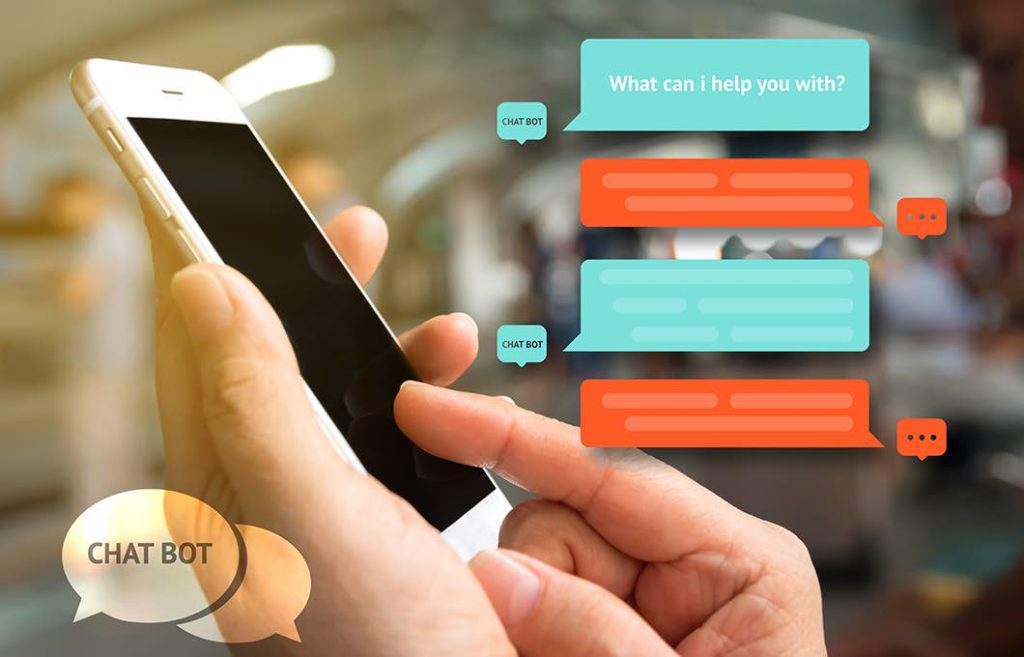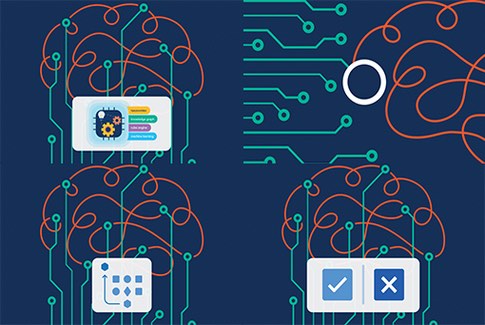
If you have noticed an increase in chatbot use, you are not alone. More and more enterprise organizations are using them to automate aspects of the customer experience. With less reliance on service agents and live agents, organizations are realizing significant cost savings and are becoming more efficient.
The growth statistics do not lie. Chatbots:
- have seen 92% growth as a brand communication channel since 2019.
- were used by 67% of global consumers in the past year.
- will handle 75-90% of healthcare and banking queries by 2022.
What Is It? A Chatbot Definition.
A chatbot system uses conversational artificial intelligence (AI) technology to simulate a discussion (or a chat) with a user in natural language via messaging applications, websites, mobile apps or the telephone. It uses rule-based language applications to perform live chat functions in response to real-time user interactions.
Why Are They Important?
A chatbot is often described as one of the most advanced and promising expressions of interaction between humans and machines. These digital assistants streamline interactions between people and services, enhancing customer experience. At the same time, they offer companies new opportunities to streamline the customer’s engagement process for efficiency that can reduce traditional support costs.
A chatbot can enhance and engage customer interactions with less human intervention. It removes the barriers to customer support that can occur when demand outpaces resources. Instead of waiting on hold, customers can get answers to their questions in real time. Less service friction can improve the brand experience for customers.
For companies looking to improve their customer experiences, the addition of chatbots to answer simple questions can improve satisfaction, streamline the customer journey, and provide customer-centric support.
Of the expected benefits of these digital service tools:
- 68% of customers cite 24-hour support
- 64% cite quick answers to simple questions
- 51% cite instant responses
Who Is Using Chatbots?
While chatbots have become fixtures in the online retail space to streamline customer support, they have also been widely adopted in industries such as finance, healthcare, and insurance. Beyond customer support, you see sales teams use chatbots to steer customers through the sales funnel and marketing teams to generate qualified leads.
Chatbots are a type of digital assistant designed to improve business efficiency by automating routine support tasks. They can save businesses as much as 30% on their customer support costs. They can also generate revenue by converting abandoned cart transactions into sales. They streamline customer support through automation and, according to Juniper Networks, can save consumers and businesses over 2.5 billion customer service hours by 2023.
Here are few examples of how chatbots are being used in the real world:
- Verizon uses them to answer initial customer support issues.
- The Transportation Security Administration (TSA) uses them to automate AskTSA on Twitter and Facebook.
- Bank of America’s Erica reported 19.5 million users, over 100 million interactions and 90% efficacy for useful answers.
Which Chatbot Approach Is Right for You?
There are different approaches and tools that you can use when building chatbots. Depending on the use case you want to address, some technologies are more appropriate than others. Combining artificial intelligence forms such as natural language processing, machine learning, and semantic understanding may be the best option to achieve the desired results.
Standard Logic Tree
These prompt-based chatbots let customers choose from a list of prompts then take them through a series of multiple-choice questions. The application will take them to the most helpful destination based on the answers. This type of chatbot is good for simple queries with a defined scope, as it limits customers to a certain number of inputs.
Keyword Recognition
This approach allows customers to submit their written inquiries. The chatbot identifies keywords from the query and directs customers to a corresponding solution. This type of chatbot can be used for a broader range of customer inquiries.
Machine Learning
This approach uses a machine learning engine to train itself to deliver an optimal response to a customer query. It learns based on past inquiries and evolves as inputs are analyzed. A large amount of data is needed to train the system, and machine learning of the chatbot application is done in a black box with no insight into what is learned.
Symbolic NLU
This approach leverages symbolic AI to provide a more conversational approach to customer service. It uses natural language technology to understand the intent of a customer query. It provides full visibility into the rules that machines use to gain knowledge, with human oversight to adjust the learning models.
Behind the Scenes: How a Chatbot Works
Chatbots are trained to act upon the inputs provided by consumers or they can be driven by rules. They rely on a machine’s ability to interpret human language (spoken or typed) and are trained to respond to interactions. The more data fed to the chatbot, the more human-like the response. There are two different tasks they perform:
User Request Analysis
User request analysis is the first and most relevant task a chatbot performs. It is the analysis of a user’s request which is used to identify intent and extract relevant entities. A chatbot’s capacity to understand the language and context of a request is critical to its ability to provide an accurate response.

An example of a user request analysis.
Returning the Response
Once user intent has been identified, the chatbot must provide the most appropriate response to the request. The answer may be in the form of:
- a generic and predefined text;
- a text retrieved from a knowledge base that contains different answers;
- a contextualized piece of information based on data the user has provided;
- data stored in enterprise systems;
- the result of an action that the chatbot performed by interacting with one or more backend applications; or,
- a disambiguating question that helps the chatbot correctly understand the user’s request.

A chatbot returns a response based on input from a user. This process may look simple but, in practice, things are quite complex.
Chatbots have quickly become key cogs in the enterprise business. They make it far easier (in most cases) to resolve outstanding customer issues and eliminate a significant amount of manual work for live support agents. With that said, they are not to be perceived as human replacements, but rather as human augmentation.
Customers still value the ability to interact with live agents, particularly for more complex queries. Thus, keeping a human in the loop remains essential to the overall chatbot equation.
As businesses look to make information more easily accessible (both internally and externally), expect to see even further innovation in chatbot technology. Key to that innovation equation is deeper contextual understanding of language. We know a thing or two about that.


